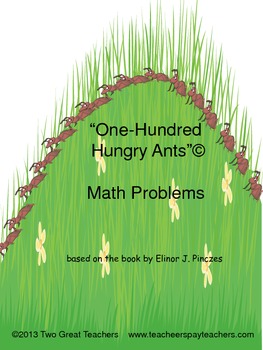

They bumped into each other in the more compact formations. This is why the ants took so long to relocate. Children will find 1X100 is faster because they could spread out whereas, with the 10X10 graph takes less space but is the hardest to fill because of the closeness. Next students evaluate why their group either worked faster or slower to get the the raisins in the formations through whole class discussion. Teacher observes and assesses children’s progress with the rubric checklist.ĩ. Keep track of the groups as to who finishes first, second, third, fourth, and fifth placing the 100 raisins on their graphs. Also, all the rubric expectations to the students.Ĩ. Remind students to count at the end to check the squares are all used. Test theory of complicated formations developed in step 2 by dividing children into equal groups around five grids.ħ.Ğxplain how to display 100 raisins with one raisin to one square. The teacher will point count to demonstarte how to count to 100.Ħ.

Practice counting orally to one hundred by using a page in the book. Was it the constant change or was it the more complicated formations 1X100, 2X50, 4X25, 5X20, or 10X10?ĥ. Students evaluate and formulate through discussion a theory as to why the ants did not get to the picnic in time to get food. Observing who is participating and is attentively listening.ģ.Ĝhildren join in and read repetitive text with the teacher.Ĥ.

While reading locate repetitive text with the children. One Hundred Hungry Ants Paperback Picture Book, Septemby Elinor J Pinczes (Author), Bonnie MacKain (Illustrator) 391 ratings Kindle 6.99 Read with Our Free App Hardcover 16.99 54 Used from 1.50 7 New from 12.48 1 Collectible from 36.28 Paperback 8.99 101 Used from 1.16 26 New from 7.00 2 Collectible from 5. Teacher states today we will be learning practice counting to 100 in a variety of ways.


 0 kommentar(er)
0 kommentar(er)
